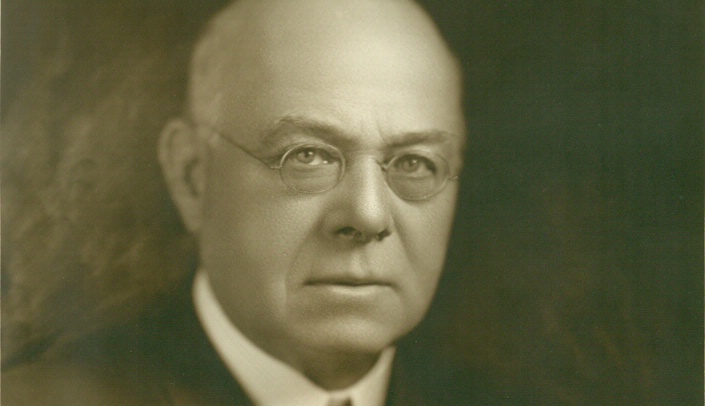This is one of a series of historical articles on the medical center provided by the McGoogan Library of Medicine.
Richard Channing Moore was born in Quincy, Ill., in 1841. He received his undergraduate degree from St. Paul’s College, Palmyra, Mo., and his medical degree from the Chicago Medical College (later Northwestern University School of Medicine) in 1865.
During 1863 and 1864, between lecture terms in medical school, he occupied the position of acting assistant surgeon in the U.S. Army during the Civil War, serving most of the time on a hospital steamship on the Mississippi River.
He came to Omaha in the fall of 1865, and he was in active medical practice in the area until his death. He was a member and president of the following organizations:
- Omaha Medical Society (president 1886 and 1898).
- Nebraska State Medical Society (president 1886-1887).
- Missouri Valley Medical Society.
- American Medical Association (where he served as vice president).
In 1867, he assisted Dr. James Porter Peck, another early Omaha pioneer physician, in treating patients injured in an attack by Native Americans on Plum Creek Station (later known as Lexington, Neb.), in central Nebraska. The injured, most of whom were employees of the Union Pacific Railroad, were brought to Omaha by train after the incident.
In 1881, he was one of the founders of the Omaha Medical College, the predecessor to UNMC, where he was appointed professor of materia medica and therapeutics in 1882. His other academic appointments included professor of diseases of children, 1886, and professor of diseases of the mind, 1894. He was given the status of professor emeritus of the University of Nebraska College of Medicine in 1912.
He was city physician of Omaha from 1876 to 1879, and also served as a member of the U.S. Board of Examining Surgeons for veterans’ pensions. He was a member of the Knights of Ak-Sar-Ben and Trinity Episcopal Cathedral in Omaha. In 1868, Moore married Eliza Bushnell in Quincy. They had three daughters: Mary, Helen, and Lydia.
Moore died in Omaha in 1916 at age 74 and is buried in Forest Lawn Cemetery. At the time of his death an editorial was written about him, which said in part, “His profession he loved and its members were the companions of his choice … His patients reposed in him the utmost confidence. To them he was not only physician, but confidant and friend.”
